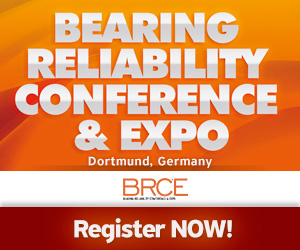Industrial Maintenance
Changing Your Organization for the Better

Make Your Maintenance and Business Changes Effective? It is a common fact that 80% of changes that are implemented in Maintenance, fail to meet the objectives that they are designed for. The big question we need to ask ourselves is, “Why is this so – why did they not succeed?” And the answer is, we failed to change the culture in the way that the people work.
Stephen J. Thomas is literally a guru in Change Management. With many years of experience in maintenance and reliability issues, he has defined the reasons why changes fail to get properly implemented and written a number of creditable books on the subject.
We are privileged to announce, that Steve has agreed to write 5 articles for ReliabilityLink on this subject. Within these article he will guide us through the processes we need to consider when attempting to implement change or any form of new ways in which we want our people work.
Part 1: The Elements of the Change Process
Introduction
“There is nothing more difficult to take in hand, more perilous to conduct, or more uncertain in its success than to take the lead in the introduction of a new order of things, because the innovator has for enemies, all of those who have done well under the old conditions, and luke-warm defenders in those who will do well under the new.”
Machiavelli clearly understood the difficulties associated with change when he made this statement in “The Prince” almost 500 years ago. Truthfully, change is probably the most difficult thing for us to accomplish as part of our jobs. Yet it is something that is a critical component of success in today’s ever-changing work environment.
The business landscape is littered with companies that failed to recognize that change was needed or if they recognized it they failed to act. The common denominator for all of these firms is that they are out of business, going out of business or at the minimum not performing at the level that those in the organization would like to see.
But there is hope. Change can be successfully accomplished and companies that would like to improve can do so. They can move from their current level of performance to a new level that provides vast improvement in the areas where there currently is dissatisfaction. The question is how?
For many of us, our collective experience in the world of change is one of marginal success. Goals are developed and when later reviewed indicate that our efforts fell far short of what we had hoped to achieve, when they were initially assembled.
The question that needs to be asked and answered is why? Why do these change processes, initiated by well intentioned, highly intelligent people, fail to achieve the desired results? This question is what I am going to attempt to answer for you in the balance of this part of the article and the four parts that will follow.
The Three Characteristics of a Successful Change Initiative
How do you get people who have done well under the old order of things to embrace something new and different? How do you get those who believe that a change is needed, but are concerned about the ultimate outcome to initiate the effort? The answer to these questions is not an easy one. However there are three essential elements that are needed to get an organization to embrace, actively support and make a change effort a success. If any of these elements are missing from the equation, problems will occur. These are:
* Dissatisfaction with the current state of things
* A vision of the future
* A set of next steps showing how to get where you want to go
Dissatisfaction with the Current State
It is easy to create a high degree of dissatisfaction when a company is on its way out of business. Everyone has seen or read about companies who have been in this position and have turned themselves around — going from being on the verge of closing their doors, to one of being a leader in their industry. In these cases it is easy to get people to recognize their dissatisfaction and want to make the necessary change for the better. What about companies, that are marginally profitable or even successful? How do you get them to recognize the need for change in the form of continuous improvement? The answer is that you need to create a mismatch between the current “as-is” state of the business and what everyone collectively sees as their “to-be” state. If this is done correctly then dissatisfaction with the current state of affairs will be the result.
For example, suppose that you work in a plant that is relatively new and not operating at full capacity. The equipment runs reliably and when it doesn’t there is time to shut down to affect repair. Additionally, the maintenance organization is well trained to make rapid repair and restore the equipment to service. Now further suppose that as time goes on two things happen. The demand for your product increases so that the equipment is now running around the clock, there is no allowance for downtime, and the equipment is getting older and the reliability is dropping. Obviously this is not an enviable position to be in and danger is looming on the horizon.
You know that a process needs to be put into place that addresses equipment failure before it happens — a preventive and predictive maintenance effort. However, this is a major change and will make those who are the great “rapid repairers” very uncomfortable. The praise that they got from Production for quick repair and return to service will no longer exist, because in the new order of things, equipment won’t fail. Your problem is, how do you create dissatisfaction with the current state of affairs so that people will want to move to the new state of equipment reliability. There are eight key elements to successfully making this transition. They are:
* Leadership – management at all levels leading the change.
* Work Process – a work process in place that supports the new way of working.
* Structure – an organizational structure that supports the new process.
* Group Learning – processes in place that allow the organization to make changes, evaluate the results, learn from what they accomplished.
* Technology – computer support tools to make the process easier.
* Communication – continuously explaining why the change is needed and where the organization stands in the effort.
* Interrelationships – high quality collaborative efforts between people and work groups.
* Rewards – positive reinforcement for making the change.
These elements are key, but there is one overriding component that needs to be addressed in more detail. This is the vision of what the change will look like. This is the clear picture of the future that will inspire those who have done well under the old conditions and energize those who are luke-warm to the new.
This concludes part 1 of 5 of “Changing Your Organization for the Better”. Part 2 will address concept of Vision.
Get this knowledge from an Online training initiative created by Steve For the Reliability Institute. This is a comprehensive course facilitated by Stephen J. Thomas himself – for the very low price of just 250.00 US$.
You can see details of this training by following the link below.
http://www.reliabilityinstitute.com/change-management.html#.VM_Zb890xD8
If you would like to take this course at the dramatically reduced price of just 250.00 US$, then send a mail today to ian.knight@reliabilityinstitute.com
Portions of this article were extracted from “Successfully Managing Change in Organizations: A Users Guide” and “Improving Maintenance & Reliability Through Culture Change” both by Stephen J. Thomas with permission from the publisher, Industrial Press, Inc.

Tagged change management, Stephen J. Thomas



Pingback: Changing Your Organization for the Better – Part 2 - ReliabilityLINK
Pingback: pax 3 discount code